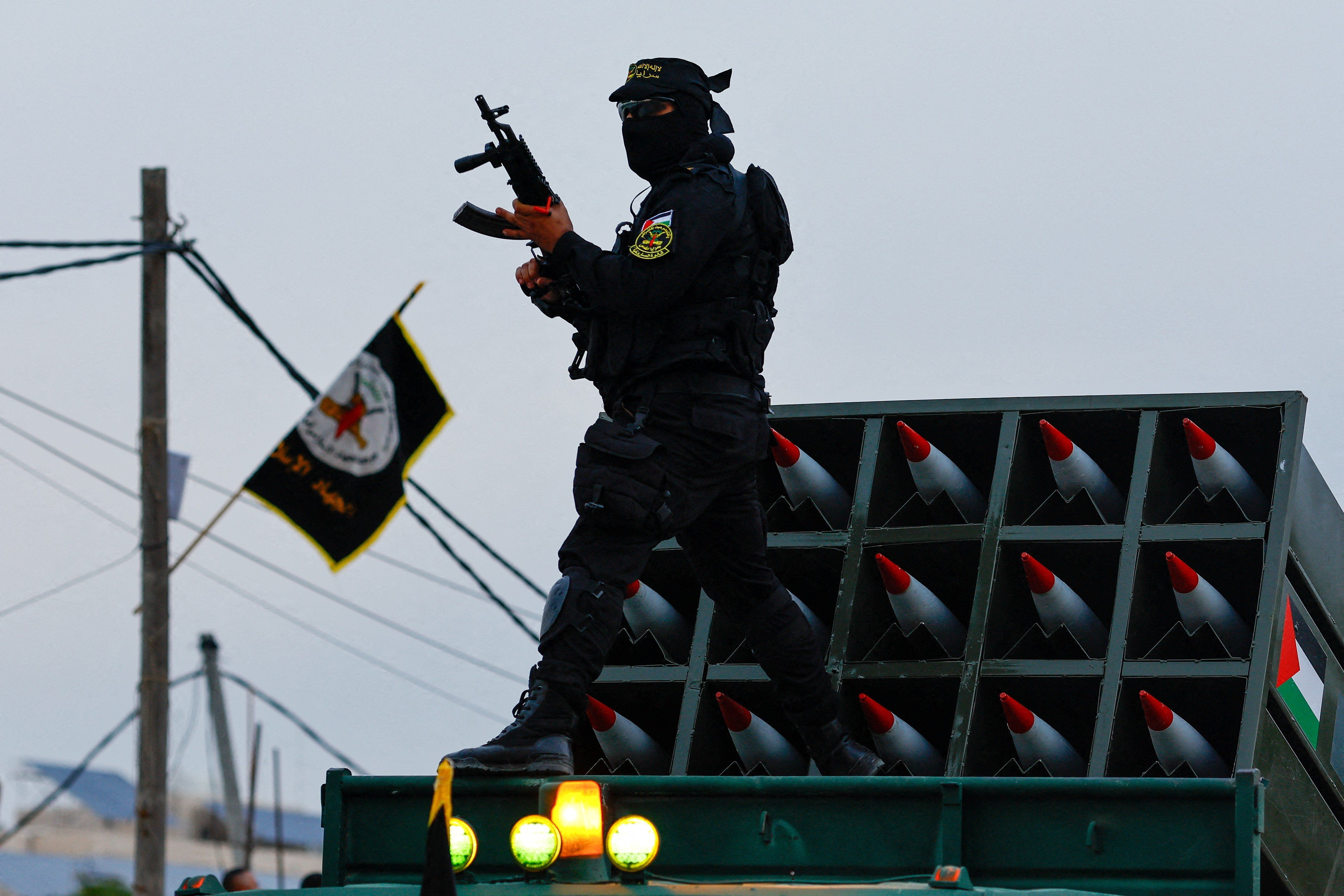The Israeli and US governments on Wednesday claimed to have preliminary intelligence showing that the blast that Hamas authorities said had killed several hundred people at a Gaza hospital on Tuesday night was caused by an errant rocket fired by Palestinian Islamic Jihad (PIJ).
What is Palestinian Islamic Jihad? It is an older, but smaller, relative of Hamas. Like Hamas, PIJ is a jihadist organization that seeks to destroy Israel and create an Islamic society in historic Palestine. Based primarily in Gaza, it counts on strong backing from Iran and is considered a terrorist organization by the US, EU, and Israel.
Where did it come from? The organization was founded in the early 1980s as an offshoot of the Egypt-based Muslim Brotherhood, during a period when the success of the 1979 Iranian revolution boosted the power and appeal of Islamist politics across the region. Like Hamas, it was an immediate rival to secular movements, like Yasser Arafat’s Palestine Liberation Organization, which had dominated the Palestinian national movement until then.
What does it do? In the 1990s, PIJ began a campaign of suicide bombings against Israeli targets and has amassed a large cache of rockets that it periodically fires into Israel from Gaza.
How does PIJ compare to Hamas? PIJ is much smaller, counting only about 1,000 men. And unlike Hamas, PIJ is focused exclusively on armed struggle — it has neither a political wing nor an extensive network of social services.
Do PIJ and Hamas get along? They were rivals in the 1980s, but their shared goals and motivations brought them into strategic alignment from the 1990s onwards. PIJ, lacking a political wing, has sometimes been more risk-averse than Hamas in confronting Israel. In 2018, the two organizations issued a joint statement pledging to work together.
